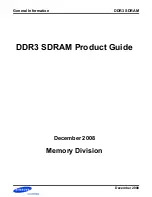
167
10.3
Timer Operation
10.3.1
Interval Timer Operation
When bit TMA3 in timer mode register A (TMA) is cleared to 0, timer A functions as an 8-bit
interval timer.
Upon reset, TCA is cleared to H'00 and bit TMA3 is cleared to 0, so up-counting and interval
timing resume immediately. The clock input to timer A is selected by bits TMA2 to TMA0 in
TMA; any of eight internal clock signals output by prescaler S can be selected.
After the count value in TCA reaches H'FF, the next clock signal input causes timer A to
overflow, setting bit IRRTA to 1 in interrupt request register 1 (IRR1). If IENTA = 1 in interrupt
enable register 1 (IENR1), a CPU interrupt is requested.*
At overflow, TCA returns to H'00 and starts counting up again. In this mode timer A functions as
an interval timer that generates an overflow output at intervals of 256 input clock pulses.
Note: * For details on interrupts, see 3.3, Interrupts.
10.3.2
Clock Time Base Operation
When bit TMA3 in TMA is set to 1, timer A functions as a clock time base by counting clock
signals output by prescaler W. The overflow period of timer A is set by bits TMA1 and TMA0 in
TMA. A choice of four periods is available. In time base operation (TMA3 = 1), setting bit TMA2
to 1 clears both TCA and prescaler W to their initial values of H'00.
10.3.3
Clock Output
Setting bit TMOW in port mode register 1 (PMR1) to 1 causes a clock signal to be output at pin
TMOW. Eight different clock output signals can be selected by means of bits TMA7 to TMA5 in
TMA. The system clock divided by 32, 16, 8, or 4 can be output in active mode and sleep mode. A
32.768 kHz signal divided by 32, 16, 8, or 4 can be output in active mode, sleep mode, and
subactive mode.
Summary of Contents for H8/3660
Page 4: ......
Page 26: ...10 ...
Page 82: ...66 ...
Page 152: ...136 ...
Page 154: ...138 ...
Page 260: ...244 ...
















































